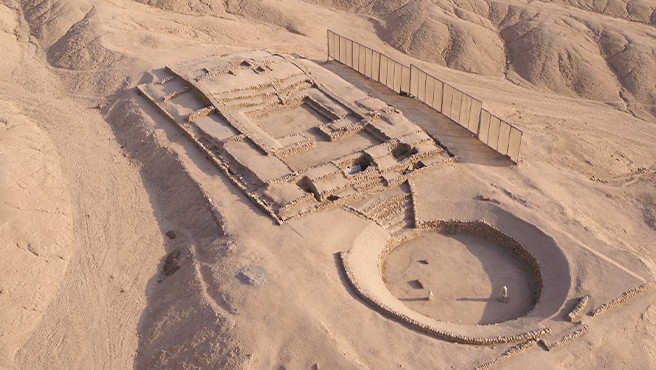Peru’s Ministry of Culture recently revealed the archaeological site of Peñico after eight years of research and conservation work.
Located in the province of Huaura, the 3,500-year-old “City of Social Integration” dates back to 1800 BCE and was strategically located “to enhance the monumentality of its buildings, protect against flooding and landslides, and promote interaction and exchange,” the Peruvian Ministry of Culture said.
The ancient city likely served as a trading hub linking Pacific coast cultures with those in the Andes and Amazon, with peak activity around the same time as early civilizations in the Middle East and Asia. Peñico is located in the northern Barranca province and is close to where the Caral civilization, the oldest in the Americas, developed 5,000 years ago, according to Reuters.
Related Articles

Ruth Shady, director of the Caral Archaeological Zone (ZAC) and the archaeologist who led the research into the site, told Reuters that Peñico is important because experts believe the city emerged after the Caral civilization was devastated by climate change.
“Due to its strategic location, it connected settlements on the coast and in the Supe and Huaura mountains, as well as those living in the Andean-Amazonian territory and the high Andean region,” archaeologist Shady Solís stated in a press release from Peru’s Ministry of Culture.
The urban center was built 1,970 feet above sea level. Eighteen structures have been identified so far, including what the Peruvian Ministry of Culture described as “major and minor public buildings and residential complexes.”
One major public administrative building—identified as B2 and “the most important in the urban history of Peñico”—has notable designs of conch shell trumpets called pututus depicted on the walls of a quadrangular hall.
In addition to emitting a sound that can be heard over long distances, the pututu was also used to call together meetings, announce important events, and was considered a symbol of social significance in Andean societies. The conch shell trumpet was also considered an important ritual offering to the gods.
The building identified as B2 also contained “significant” archaeological discoveries, including sculptures made of unfired clay of human-like figures, animal figures, and ceremonial objects; necklaces with beads composed of different materials; and a large variety of stone artifacts, including grinders, crushers, anvils, and hammerstones.
The news of the site’s opening for tourism was announced during a press conference on July 3.
ZAC has also organized the first Peñico Raymi to take place on July 12. The traditional Andean festival will feature various cultural activities, including a ceremony honoring the goddess Pachamama (“Mother Earth” in Quechua) and an arts festival.

